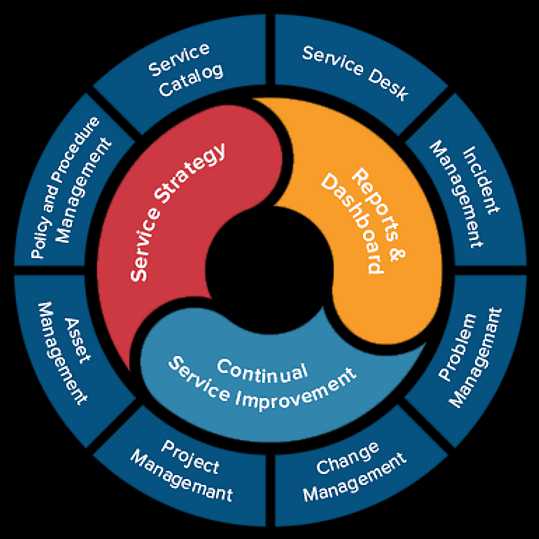Without this, you might not meet customer expectations, especially if that roots in preventable ITSM mistakes. This will affect the technical side of your operations and put you behind your competitors when it comes to future product or service innovation.
Creating the best ITSM plan for your business will ensure bold and successful execution of deliverables in the long run. Here are some tips on how to build an ITSM plan.
Get Stakeholders to Support You
Similar to other business strategies, the feasibility of your ITSM plan will depend on your ability to get all major stakeholders to support the vision you have, including your goals and execution workflows.
You can only reach your full potential if the employees associated with the implementation of your plans are on the same page as you and knowledgeable of the benefits of your overall vision. They don’t necessarily have to admire all aspects of it. Just as long as it’s inspiring and motivating, it’s enough to develop employee engagement.
Inform everyone about the major process-related changes that’s going to happen in your IT service operations (roles, ecosystem structure, workflows, etc.), management functions, and cross-department business enablement.

Getting support from all stakeholders can exhibit a unified sense of IT governance. Failure to have this collaboration can prompt team members to do their things on their own, impacting productivity and resulting in delays.
Put simply, keeping an open line of communication with your staff can go a long way to succeed in your strategy.
Develop a Compact ITSM Foundation with a CMDB
It is imperative for an ITSM strategy to create a solid information foundation through data modeling techniques. A Configuration Management Database (CMDB) usually helps in this case. Now, the question is how do you build a resilient CMDB?
With a whole host of customization possibilities available, it’s highly likely to fall short of optimal efficiency the first time you try to map one out. In fact, you might not be able to come up with a final version of your CMDB on your first attempt. You have to be committed to working towards getting a fully optimized version of it to unravel the full power of your ITSM strategy through agile techniques.
Your CMDB should highlight the interactions between those who will utilize the database, as well as uphold base-level functionality, informational transparency, and proactively update IT service details to show service changes or upgrades.
A CMDB that stands the test of time also establishes organizational standards for asset discovery and data accuracy at the start of the strategic planning process. Automation triggers can help you comply with these standards and ensure that everyone who interacts with CMDB has the latest service information.
If you’re working with many teams in a decentralized environment, you should know how everyone should merge, reconcile, and import different pieces of data into the CMDB.
Use Other Relevant Tools for Automation
IT help desk services can streamline the deployment of ITSM processes by providing the best practices and workflows. Most solutions include automation, real-time analytics, customizable ITSM processes, and more. Along with the right processes, this can shift an IT team’s focus from troubleshooting to strategizing for growth.
It’s also important to choose a tool that suits your organization’s IT needs instead of going for expensive software that promises a comprehensive set of features. After all, you won’t be using all the functionalities available right away. It’s wiser to invest in a customizable solution that has the ability to scale up in the future.
Look for a tool that is practical, user-friendly, and can be integrated with other management tools. This way, you only need to go to one place for all your IT management processes instead of switching applications. Also, don’t forget to buy cost-effective software.
Get Feedbacks from End Users and other Stakeholders
ITSM plan shouldn’t end with implementation, it must continuously develop over time. It’s vital for an organization to leverage its ITSM processes to achieve their objectives. One way to do it is by collecting feedback from end users, identifying bottlenecks, visualizing their desired state, and creating a roadmap for further improvement.
Final Thoughts
Implementing an ITSM plan can simplify processes through structured delivery and documentation. If you are looking for an ITSM tool, our experts at ITarian can help you. Contact us now.